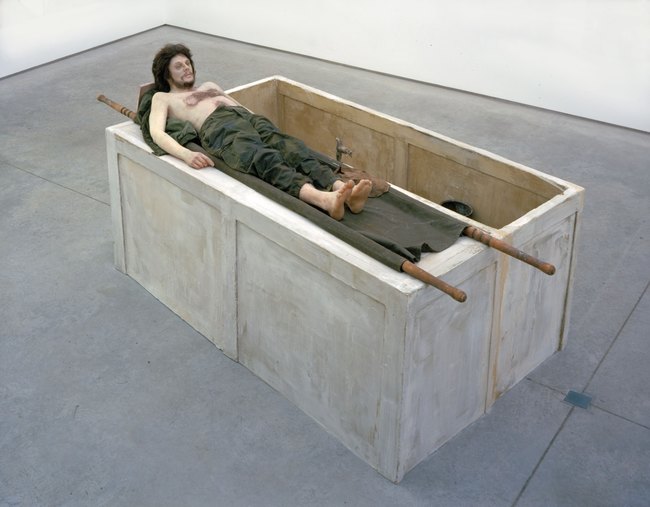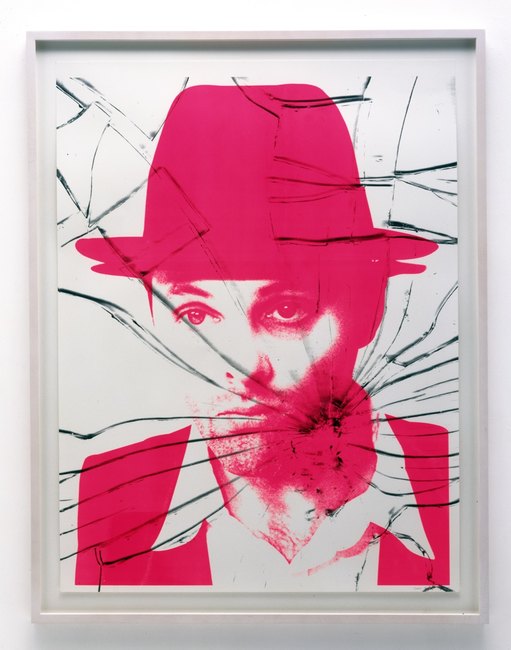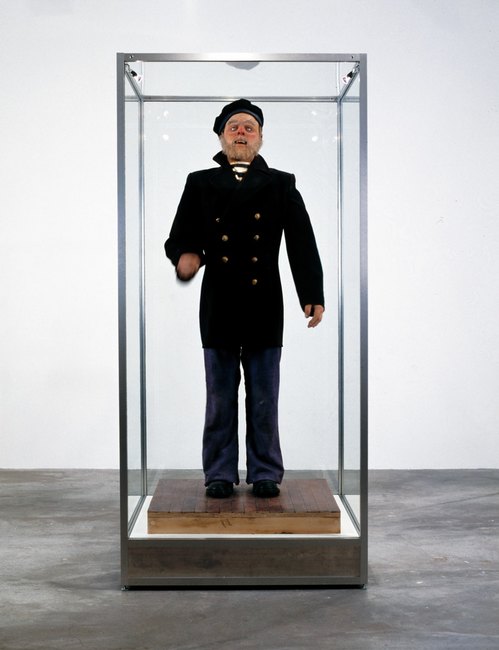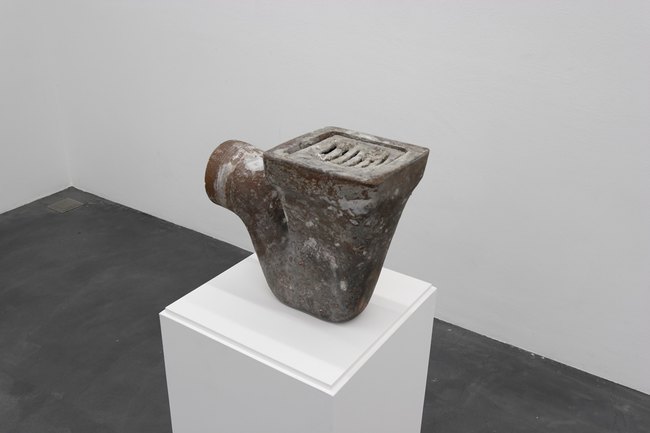AboutEssays1998The Fool
“This work I call a looking glass
In which each fool shall see an ass…
Whoever sees with open eyes
Cannot regard himself as wise
For he shall see upon reflection
That humans teem with imperfection”
Sebastian Brant “The Ship of Fools” 1494
Who is the fool? In the tarot pack, he is shown as a figure setting out on a journey, with a bundle on his back and a little dog tugging at his ragged clothes. Sometimes he is about to step off a cliff. The dog, symbol of social domesticity, is trying to drag him back home. But is the fool making a mistake, or taking a leap of faith? Is he actually wise? Verbal and visual genealogies of the fool link him with other figures – the beggar, the madman, the mascot, the scapegoat, the seer, the poet. Many of these figures intersect with Romantic images of the creative artist: the inspired outsider, at once absurd and magnificent. So, among other things, the fool is an artist, and the artist is a fool.
As a historical figure, the court fool is a parasite, a professional dinner guest. In Ancient Greece, parasitos was originally a dignifed term, applied to someone invited to official banquets because of his personal merits. It soon became debased, a word for a flatterer, a wit, someone who would use his talent for clowning, mimcry or telling jokes in return for a free meal. The fool is an entertainer, sitting at table with the nobility, his position privileged but precarious. He must never be ordinary, never dull. The artist sits at table next to the collector, then goes back to his underheated studio.
The fool has a very special position at court, or the gallery dinner. He is ‘all-licensed’, empowered to say and do things others wouldn’t dare. Sometimes he is a wise fool, cleverly telling truths under the guise of wit. He may also be a ‘natural’, a dwarf or a cripple or a moron. His physical or mental deficiencies place him outside the normal social system, depriving him of both rights and responsibilities. The fool speaks truth to power, but since he is dressed in motley, a caperer in cap and bells, no one is obliged to listen. “This is nothing, fool” says Kent in King Lear, and the fool knows as much. His words can be ignored if they are too near the mark. “Then tis like the breath of an unfeed lawyer,” he quips. “You give me nothing for it.” No one need draw his sword: there’s no honour in avenging the fool’s insults.
Above all, the fool is the only one who can insult the king. His jokes lay bare how the regime functions – the political regime of power, the aesthetic and economic regimes of value, the epistemological regime of meaning. Only through the fool’s clowning is the regime made visible to itself. The king needs the fool, for he is surrounded by sycophants. Yet however wise he is, the fool must never mistake himself for someone influential, who can wield power like ordinary men. This was the error of Archibald Armstrong, court fool to James I. Armstrong went as far as travelling as part of a royal embassy to Spain, where an off-colour quip to the Infanta about the sinking of the Spanish Armada undermined months of careful negotiation. Nevertheless, he thought of himself as a masterful diplomat, signing himself paradoxically ‘youre best foole of State’ in a letter to his royal master. His talent for making enemies finally tripped him up when he insulted the Archbishop of Canterbury and was permanently banished from court.
Armstrong tried (and occasionally succeeded) in bridging the gap between foolery and political power, never accepting their essential opposition: if the fool is taken seriously, he will be hanged for his insolence. To be a fool is to be homo sacer, an exile from the Law. In the formulation of Giorgio Agamben, the ordinary person has two types or levels of life, basic biological existence (zoë) and political or social life (bios). The fool is denied bios, the life of the subject or the citizen. He has no status, no rights or responsibilities, only bare life. What he does has no significance. Nor what is done to him. This is why, as Erasmus says in In Praise of Folly, “the most violent tyrants put up with their clowns and fools, though these often make them the butt of open insults”. Since the fool is homo sacer, under a state of exception from the Law (the Law of courtly honour, of social propriety), he is a living demonstration of the sovereign’s power to give the Law, to enforce it or suspend it at his pleasure. So the fool is related to several figures from our contemporary period of permanent emergency - the stateless person, the untouchable, the unlawful combatant, the concentration camp inmate, the mental patient, the refugee. All live under the same suspension of the Law, isolated from social and political existence.
Though, he is only a “poor, bare forked animal”, sometimes the fool can be a king. In his role as the Lord of Misrule he is, as Mikhail Bakhtin puts it, “the constant accredited representation of the carnival spirit in everyday life” For Bakhtin, “Carnival celebrates temporary liberation from the prevailing truth and from the established order; it marks the suspension of all heirarchical rank, privileges, norms and prohibitions. Carnival [is] the true feast of time, the feast of becoming, change and renewal. It [is] hostile to all that [is] immortalised and completed.” The fool is productively disruptive. He just won’t let things be. At the feast of fools, the slave is master, women are men, excrement replaces incense at the ritual and the dignified clergy are paraded about the streets in carts. The fool inverts the king, and during the period of his carnival rule, the iron network of moral, physical and social law feels temporarily as light as air. The powerful art collector becomes a puppet. The heroic artist is a tramp. The great names of the past are no more than waxworks.
If the fool is an artist and the artist is a fool, that was never more true than now, after conceptualism. The Romantic artist struggles with the raw material of the world, transmuting it into art through the heroic operation of his genius. The conceptual fool reduces this to absurdity, by eschewing the noble work of transmutation. He may claim an everyday object as art. He may utilise comically humble materials or use noble ones to fashion humble things. He may reproduce an artwork that already exists. He may reduce his art to the simplest artistic gesture of all, that of signing his own name. So Duchamp is a fool. Warhol is a fool. Foolish Piero Manzoni says shit is gold. Beuys is a fool, though often he forgets. People get angry at this motley crew of artists, who say art can be made of repetition, boredom, or banality. Artists should be hacking away at a block of marble, not sleeping late and getting drunk on promotional beer. Art should involve craft. Craft should involve skill, difficulty. Conceptualism makes craft look foolish – mere dexterity, juggling.
“When we are born, we cry that we are come / To this great stage of fools.” This is Lear’s realisation, the truth that bawling babies know and adults forget as we get caught up in the serious mummery of our social and cultural lives. Only the fool-artist still knows the truth, and we carry him about in an international charivari, the pope of piffle, the sultan of senselessness. The artworld (the very term is a carnivalesque inversion of the real world) is a veritable ship of fools – gallerists and curators and collectors and writers and artists all stroking their long velvety asses ears, taking the fool seriously, buying his golden shit. No accident that Brant’s medieval poem was first published in Basel. What could be more ridiculous than the consensual hallucination of artistic value? Hey nonny!





